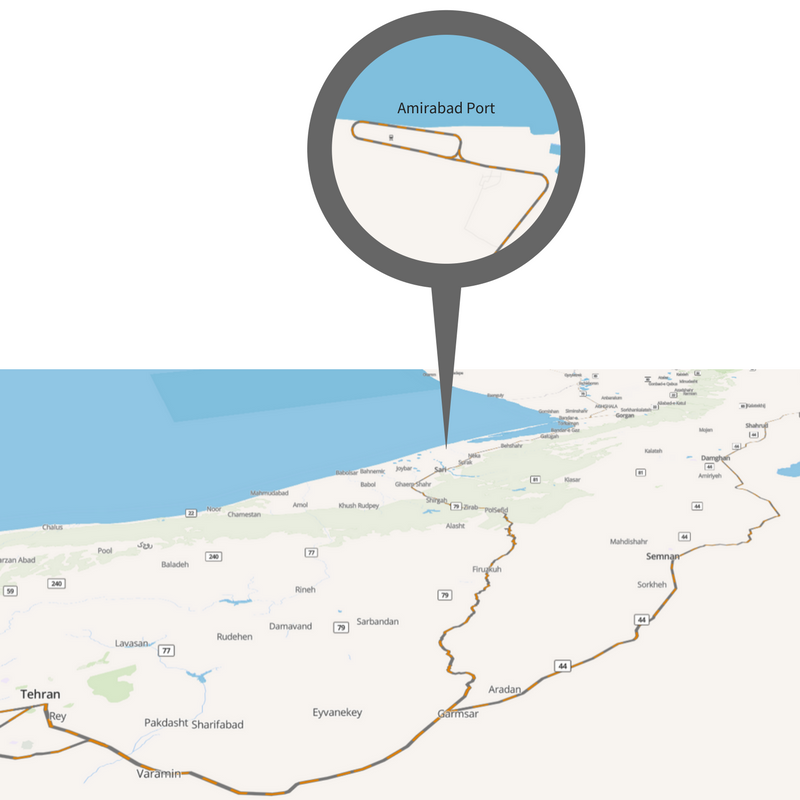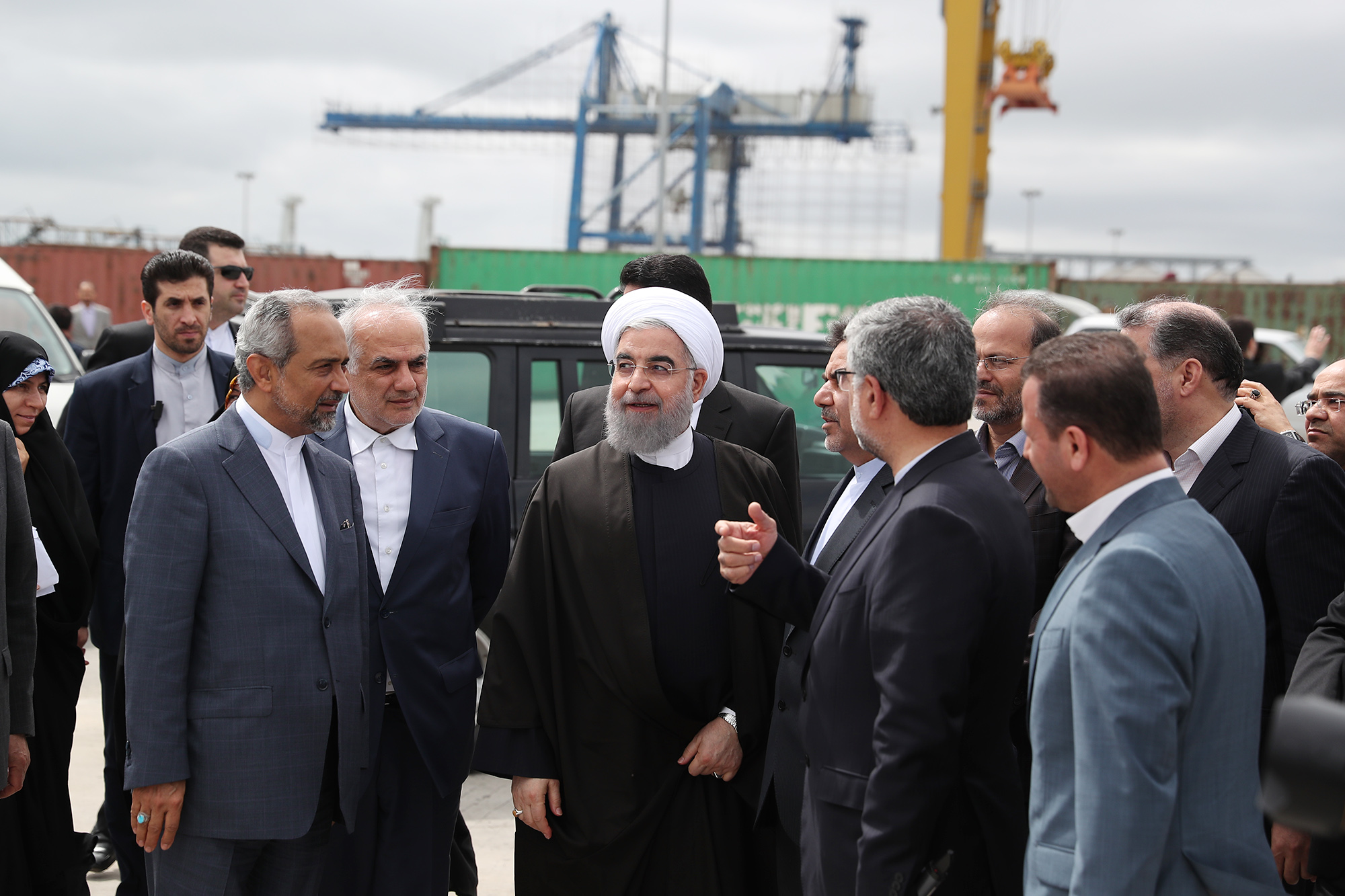President Hassan Rouhani paid a visit to the northern port and special economic zone of Amirabad on Tuesday to inaugurate a number of development projects and launch the construction of others.
The plan is to increase the port’s capacity and connect it to Iran’s rail network.
Projects that have come on stream include the second development phase of the port, consisting of six new berths with a 4-million-ton capacity, as well as facilities such as warehouses and grain silos, the Ministry of Roads and Urban Development’s news service reported.
The berths and facilities will be connected to Iran’s rail network via a short railroad whose construction began in Rouhani’s presence.
Amirabad, a 1,000-hectare brownfield port on the Caspian coast, currently has nine berths, which have the ability to accommodate Ro-Ro vessels, trains and trucks.
Its modern loading and unloading equipment, vast open and covered storage areas and the use of information technology have minimized the time the vessels spend at the port and created a secure place for storing goods, including food and petrochemicals.
On the sidelines of his visit, Rouhani said the development of Amirabad will contribute to “effective trade relations” with the Caspian Sea littoral states, and referred to its connection to Iran’s rail network as a big development for Iran’s economy.
He also highlighted the port’s role in expanding economic relations with the countries of Commonwealth of Independent States.
More than 2.5 million tons of cargo were transported among Iran, Russia and Central Asian countries via Amirabad during March 2015-16, official figures show.
The port accounted for almost half of Mazandaran Province’s $435 million exports during the period.
Amirabad is currently the largest port facility on the Caspian shore and the third largest port in Iran.
Plans are underway to expand grain handling facilities to boost its capacity from 7.5 million tons to 18 million tons by 2030. To achieve this, the grain silo capacity will be expanded from 170,000 tons to 500,000 tons.
Its oil storage capacity will be expanded from 16,000 cubic meters to 70,000 cubic meters to support fuel transit activities.
Amirabad will have a rail connection to Garmsar for transporting cargo to Tehran, Mashhad and other cities across Iran. A line from Garmsar to Incheh Borun along the Turkmen border has already been launched to provide landlocked Central Asian states a path to free waters through Iran’s rails and southern ports.

New shipping lines have been launched from the northern ports, including Amirabad to the ports of Aktau and Astrakhan in Kazakhstan and Russia respectively, to reduce the time and cost of export to neighboring countries and improve the competitive edge of Iranian products in these markets.
The government has also banked on foreign direct investment as well as domestic private capital to develop factories in Amirabad.
Ali Khedmatgozar, the director of Amirabad Special Economic Zone, said in August last year that Italy plans to invest $450 million on the construction of a bioethanol manufacturing plant in the northern port.
Bioethanol is derived from crops such as wheat and corn, using sugar fermentation process. The fuel can be used as an alternative for gasoline. It can also be mixed with gasoline to any percentage.
Director General of Mazandaran Provincial Organization of Industries, Mining and Trade Mohammad Mohammadpour said in June 2016 that Iran and Kazakhstan are working to build a joint venture refinery in Amirabad.
The news was announced upon the visit of a Kazakh trade delegation. The joint venture refinery is to process Kazakh crude for export.
During his visit to the SEZ, Rouhani inaugurated a paper production factory established at a cost of 1.55 trillion rials (close to $41.2 million).
The mill uses wood pulp shipped from Kazakhstan to annually produce 155,000 to 160,000 tons of printing and writing paper, meeting 10% of domestic demand for the product.


